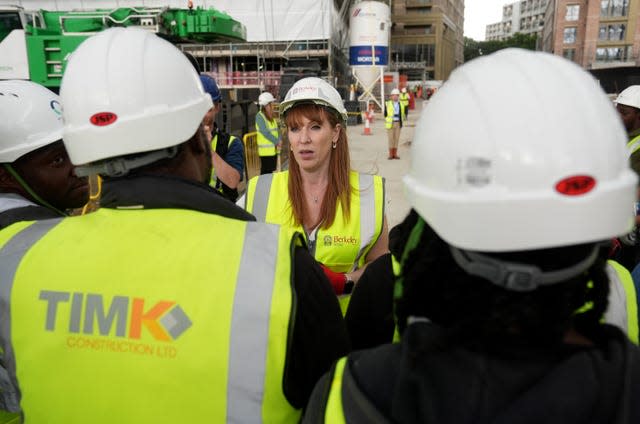‘Time for half-measures has passed’ say housing leaders amid record homelessness
Whitehall must pump-prime councils if Government chiefs want to tackle homelessness, five housing leaders have warned.
They have told Deputy Prime Minister Angela Rayner that the UK needs a “paradigm shift” to “break the cycle of homelessness and create lasting change”.
There were 151,630 children living in temporary accommodation at the end of March this year, according to data published by the Ministry of Housing, Communities and Local Government (MHCLG) on Thursday, which is up 15% year-on-year and a record high since this measure began in 2004.
A total of 117,450 households were in temporary accommodation, the figures showed.

Ms Rayner, who is also the Housing Secretary, wrote to council chiefs at the end of July and warned they have a “moral obligation to see more homes built”.
But to do that, the Government should “create a substantial capital fund to enable councils to rapidly acquire genuinely affordable housing for people at risk of homelessness”, the five housing leaders warned in a letter.
Its signatories are the District Councils’ Network housing spokesperson Hannah Dalton, Local Government Association chairwoman Louise Gittins, County Councils Network housing spokesperson Richard Clewer and Jacqui Taylor, of the East of England Local Government Association.
Matt Downie, chief executive of the homelessness charity Crisis, also signed the document.
“We stand ready to work with you to implement effective solutions to this national emergency,” they told Ms Rayner.
“The time for half-measures has passed.
“A paradigm shift is needed to redirect resources from mitigating homelessness to preventing it entirely.”
They also said: “The financial impact on councils is unsustainable.
“Many district councils now spend between 20% and 50% of their total net budget on temporary accommodation.
“Total district council spending on temporary accommodation has skyrocketed by more than 200% in just five years.
“Councils across the country, including unitary authorities in county and rural areas, are facing these acute pressures.”
They added: “Crisis reports that this financial pressure is impacting on local authorities’ ability to prevent homelessness, as resources are taken up with crisis intervention.”
Their five-point plan calls on the Government to annually uprate the Local Housing Allowance rates – the figures used to calculate Housing Benefit for tenants – to keep pace with private rents.
They also urged ministers to “fully fund councils to provide decent temporary accommodation”, commit to “long-term investment” to deliver 100,000 homes for social rent per year for the next 15 years, bolster council budgets so they can quickly build or buy housing for people at risk of homelessness, and create a “Unit for Ending Homelessness” to develop a cross-Government strategy.
Ms Taylor, who signed the letter, chairs the housing committee at St Albans City and District Council, Hertfordshire, where buyers face house prices around 17.3 times annual earnings – the highest outside London, according to the Office for National Statistics.

The Liberal Democrat councillor told the PA news agency her authority’s accommodation costs are “nowhere near covered by the Government”.
She said that is “just the financial impact – there is a human cost to insecure housing” which could be partially alleviated by building more social homes.
Ms Rayner has promised to “bring forward details of future Government investment in social and affordable housing” in a future spending review, so social housing providers can “help deliver the biggest increase in affordable housebuilding in a generation”.
The Housing Secretary wrote in her letter to councils: “You know how dire the situation has become and the depth of the housing crisis in which we find ourselves in as a nation.
“You see it as you place record numbers of homeless children in temporary accommodation, as you grapple with waiting lists for social housing getting longer and longer, and as your younger residents are priced out of home ownership.”


